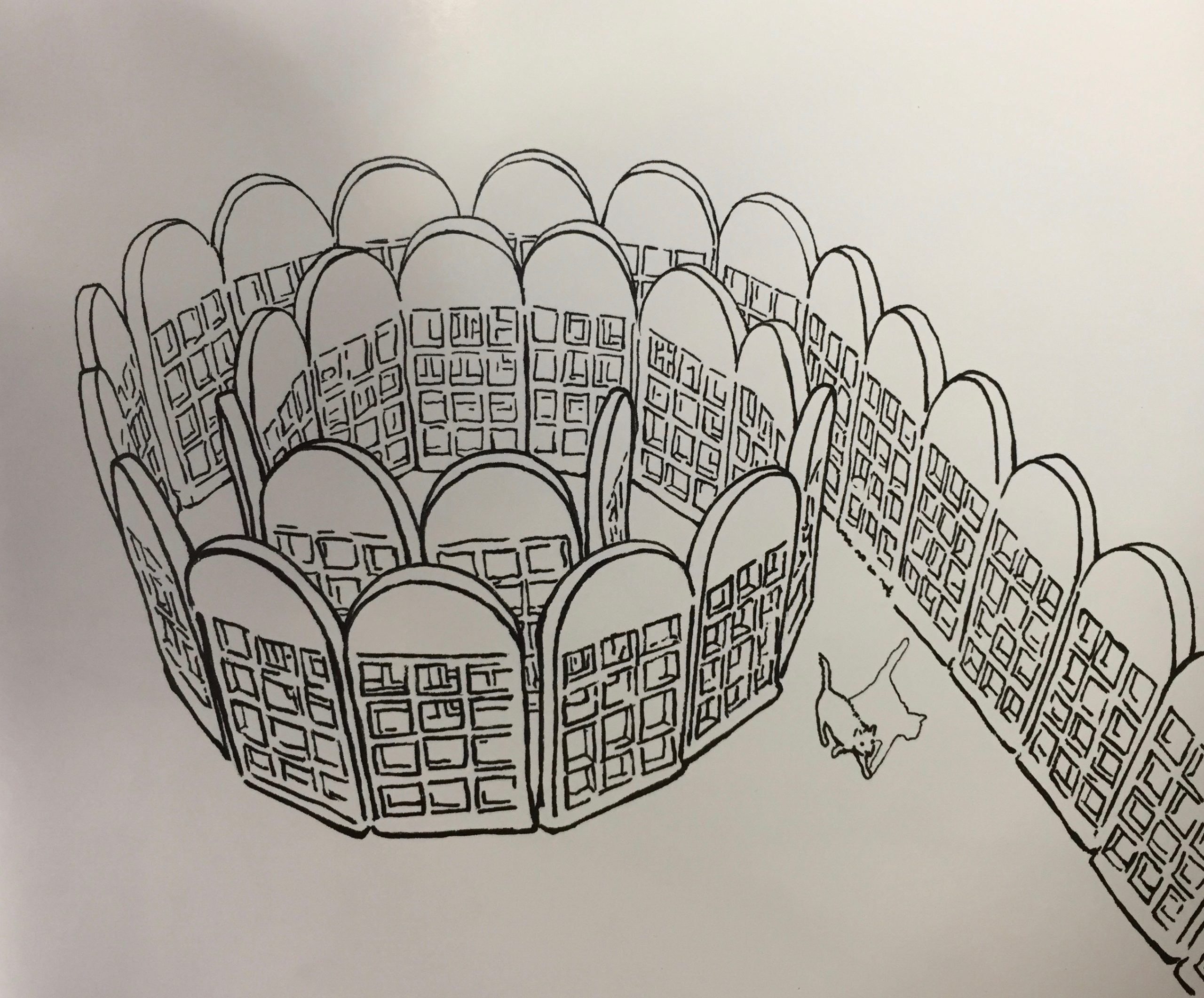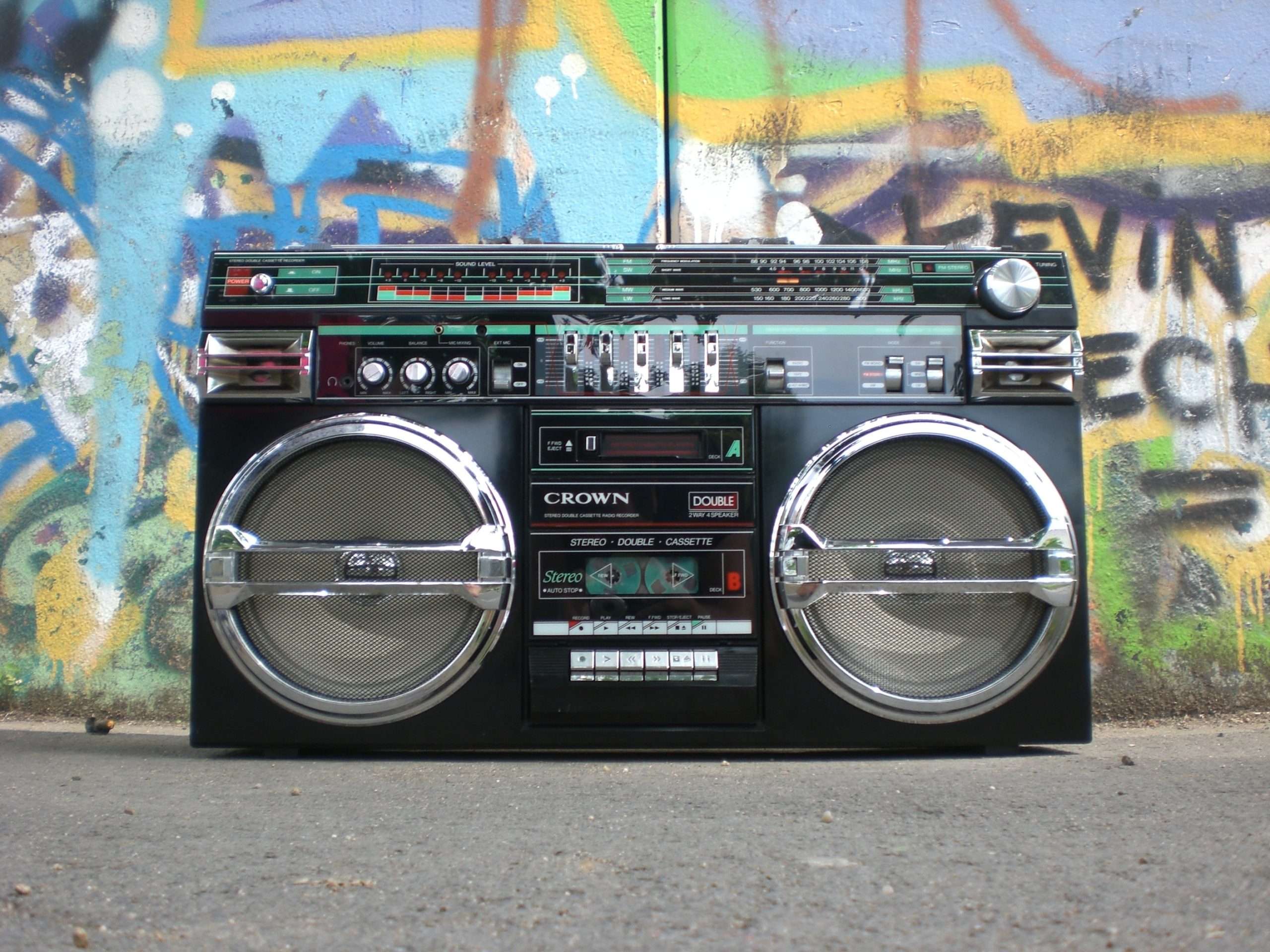Track 1, (“Wesley’s Theory”). Metaphor (pt 1): A view of the ceiling of the Sistine Chapel, but the painting has been whitewashed so that only two hands are visible. No clouds, no full-length figures, nothing to inform viewers whose dismembered hands are floating, reaching, almost touching. Those two hands might make for a great postcard, or mug, or page in an art textbook needing a study of hands. Then again, seeing only those two hands neglects the Sistine Chapel. That reduction would reduce a masterpiece nearly out of existence.
Metaphor (pt 2): I used to read Calvin and Hobbes. I was so enthralled by Calvin and Hobbes that I bought a Bill Watterson book wherein he discussed his process, the making of Calvin and Hobbes cartoons (Calvin and Hobbes the Sunday Pages 1985-1995). One thing Watterson discussed was how different newspapers would buy a different number of lines. Watterson’s Sunday comics, thus, had to work as three-line mega-comic strips, as two-line strips, and as single-line strips. Or he could have written three different comic strips every Sunday. Given his decision, the build-up that was the first two lines of the strip had to work as their own comedy, a disjointed introduction from which the actual ending would spring, without having the final line need the first two. The introduction needed to do work, while being totally expendable (they were “throwaway panels”). Watterson’s Sunday strips functioned on three registers, ending, finally, with a literal ‘one-liner.’
Some of Watterson’s Sunday strips featured landscapes, with no words, that he could cut in thirds with the bulk of the art living in the bottom third; deranged snowmen made by Calvin, or Calvin and Hobbes dancing together in sunglasses. Those strips were kinetic art and often the jokes hinged on perspective. Readers were brought back into the ‘reality’ that Hobbes was a stuffed tiger animated by Calvin’s imagination. Or was it Watterson’s? Sometimes Watterson made traditional strips that could be more easily parsed down. In both instances, no reader who saw the one-liner would know it was an incomplete picture. Was it the reader’s imagination that animated Hobbes? In manipulating strip length, Watterson compromised for his art. He had to contort himself to make the cartoons he loved, had to contort himself in order for his then-dream occupation to agree to accommodate his vision. Eventually Watterson achieved enough success that he was granted larger columns, but those columns were still only printed in certain newspapers and he still had to manipulate his work to accommodate those newspapers who wouldn’t concede that much potential advertising space to a cartoon. The goal accommodates you if you’re lucky, but rare is the artist who bends the medium to their will. I guess Calvin and Hobbes could be called pop-art too.
Track 2 (“For Free?”). To Pimp a Butterfly is a marvel. It is something to marvel at. Maybe spectacle is a better word. It manipulates subjectivity to the point that listeners sense themselves as part of a crowd. A crowd in a busy neighborhood. Listeners in one cul-de-sac stare at some ghastly wreckage while simultaneously being subjects in the wreckage and also feeling related, by blood, to the subject of that wreckage (which is a different perspective than that of an unrelated gawker, for obvious reasons). And just a street over, listeners are having a graduation party. While the spatial connection between such disparate experiences may seem difficult to recreate sonically, Lamar has done it. To Pimp a Butterfly flits from street to street; like the butterfly whose delicate wings, according to legend, pick up the oil from fingertips that might touch it, the album too bears the weight of all the fingerprints that influenced its creation and, simultaneously, the prints of people who will be influenced by it. Unlike the insect, fingerprints don’t bog the album down and introduce it to a mortality that will root it to a final resting place. Instead, the album is emboldened to travel farther and fly higher, proudly wearing the fingerprints that multiply along its travels.
This visual, visceral album does not release the eyes and ears of those who engage with it. That is partly because it displaces the listener with such profound force that to turn away, to stop listening, feels like more than the betrayal of a rapper. The re-situating of this album generates a connection so deep that to ignore it becomes a betrayal of self, of family, of history, and of art.
To be honest to the album, this review has to start with the listening. But that listening spins the mind so aggressively that I can make no guarantee regarding dark recesses of the mind that this spin might illuminate. I won’t say I’m not afraid of the dark, but when my mind is reeling like this, I can’t guarantee I won’t take this essay beyond darkness into Marianas Trench k-holes, so hopefully we can face and overcome this fear together.
What Lamar has assembled on this album; unparalleled production, precise and remarkable layout, intense listenability, all alongside commercial success, is nearly unheard of. On my first listen, I finished track five and sent a text message to a friend and fellow hip-hop aficionado that read: “I’m five tracks in and Kendrick’s new album might be the best hip-hop album ever. So sick.” I was smiling. I was remembering why I fell in love with hip-hop.
On Wesley’s Theory, the first song on the album, the introductory refrain “every nigga is a star” cuts out and Lamar’s voice is heard crooning, over a funk beat, about having sex with his first girlfriend: “At first I did love you, but now just want to fuck.” He is also masturbating to what would be his first girlfriend: “late nights thinking of you, until I got my nut.” He is also learning a lesson from her: “Tossed and turned, lesson learned, you was my first girlfriend…” His lesson takes him to a now-past where he fantasizes about how he will behave once he gets signed to a recording contract. The transition and Lamar’s ease with figures of speech leads me to think that “getting signed” is the metaphorical girlfriend that Lamar desired. That girlfriend and his life with her, symbolizing and fusing with his record contract in this fantasy, looks as surreal as any dream:
when I get signed, homie imma act a fool… snatch a little secretary bitch for the homies, blue eyed devil with a fat ass mouth, imma buy a brand new caddy on vogues… platinum on errything… when I get signed, homie imma buy a strap straight from the CIA, set it on my lap, take a few M16s to the hood… at the White House, republican run up on me, get socked out. Hit the press wit a Cuban link on my neck, uneducated but I got a million dollar check…
Stalking this metaphor leads to my thinking that while Lamar desired to ‘lock down’ his metaphorical girlfriend via a state-enforced contract called marriage, his achievement of that goal which is his now-present, is not as glamorous as he once imagined. His contracted life is more real than surreal. His life does not look as absurdly flashy as it did in that played-out hip-hop fantasy.
With that first verse, a tone is set. This album is a collision. Rap is a collision. Lamar sees contradiction in the revolutionary history and id of hip-hop as it runs up against the absurdist, surrealist reality of excess. Sex is a collision. Two supposedly opposite parts come together, literally run into one another. Yet that ‘contradiction’ can yield new life. The speaker’s life is a collision. “Wesley’s Theory,” the first track, is presumably a reference to Wesley Snipes, who acts a metaphor for this collision.
Wesley Snipes’ last name is an articulation of violence, as in sniper rifle. That violence is acknowledged when Lamar says: “Wesley Snipped your ass before 35.” There is also violence in Wesley Snipes’ acting career. Snipes is probably best known as an “Action Star,” specifically for his portrayal of the vampire-slayer Blade in the Blade movies. Filmic violence is a specific violence. The more traditional violence of his film career begat its own violence when Snipes was sentenced to time in prison for failing to pay taxes on some income from those movies. Prison can be violent. This sentencing was violent.
The sentence was violent because Wesley Snipes was sentenced to 3 years in prison for misdemeanor offenses. His offenses were “white collar” and “victimless.” Criminology students are taught that “victimless,” “white collar” crimes are punished less severely than street crimes involving drugs and violence. That information and information on the statutes regulating possession of crack cocaine vs powder cocaine demonstrate ways in which the American Justice System is systemically racist (the years of mandatory minimum sentencing are equal when the quantity of crack to cocaine is 1 to100. Crack use is largely limited to minority populations). While it is unlikely that Lamar was thinking of Martha Stewart during this verse, it struck me that the 5 months that Stewart spent in a “federal prison camp” for her felony offenses makes Snipes’ sentencing seem exceedingly violent by comparison. In my criminology classes, I was taught that felonies are worse than misdemeanors. Perhaps the severity of punishment for white-collar crimes depends on what color neck that white collar is buttoned around.[/one_half]
The message took on new meaning when Chappelle, famously, walked away from his show. In spite of the millions of dollars he was due, Chappelle left his show with no explanation. He quit filming and went to Africa. Chappelle was ridiculed in the media and was called “crazy.” The media felt ‘beaten’ by Chappelle and since the media had “given [Chappelle] money,” it felt insulted at his obstinacy and re-framed him. The media would not, or could not, stand for it, instead slinging insults, claiming no sane person could turn down that much money. What Chappelle realized, and what he believed, was that he was losing touch with his identity by selling himself. Chappelle was deciding how much his soul was worth. He was asking: “How much a dollar cost?”
On track one, Lamar is considering the collision of fantasy and reality. What happens to a person when the dreams they are fed as a child, dreams they literally work for, are finally realized? For Lamar as well as Dave Chappelle, the introduction to the answer sees weight, responsibility, and sacrifice coming with the achievement of those dreams to staggering degrees, beyond anything that may have been incorporated while dreaming the fantasized now-reality.
Track 3 (“King Kunta”).
“King Kunta” is the most radio-friendly song on the album. It is a beautiful, boastful, cryptic track. As a song, it feels like the height of Kendrick Lamar hype. King Kunta is beauty, energy, and focal node. It is the spectacle and the height of the collision in some ways. Because just as it is the most radio-friendly and thus most ‘commercial’ song on the album, on it Lamar is also a black power spokesperson, the 2015 re-imagining of Kunta Kinte from Alex Haley’s Roots.
Forming an arc out of Lamar’s last album- good Kid m.A.A,d. city– and the first tracks of TPAB, “King Kunta” resonates as the arc’s apex. The song’s protagonist/speaker goes “from a peasant to a prince to a motherfuckin king,” subsuming history, nuance, and the Kendrick Lamar ethos.
A king has all the money and all the power. On “Peer Pressure,” from good Kid m.A.A,d. city, money and power seem to be what the speaker is searching for and on “Black Boy Fly” money, power, and a way out of Compton are the things the speaker fears he will never achieve, whether by legitimate means or otherwise. But on “King Kunta” the worries of the prince have been assuaged and the speaker finally has it all. This achievement is born of originality that the speaker claims is unusual in modern hip-hop: “most of y’all sharing bars like you got the bottom bunk in a two-man cell. And if I gotta brown-nose then I’d rather be a bum than a motherfuckin baller.” The speaker takes shots at the rap industry by empowering the word bars to do double work. Bars refers to prison bars and the lyric ‘bars’ that comprise rap verses. Pushing this metaphor further sees those rappers that would share bars trapping themselves in prisons of their own making, failing to create a new and truly original sound. So profoundly has the speaker achieved his goals that he continues to boast, brag, and spurn those who claim, falsely, to be “true friends:” “24/7, 365 days times 2, I was contemplating getting off stage just to go back to the hood, see my enemies and say… Bitch, where were you when I was walking?”
But as soon as this apex is achieved, at the same ‘time’-if a single track is a single moment-the cracks start to appear: “Now everybody wanna cut the legs off him.” Cutting down celebrities, especially black celebrities, is a trend the speaker again broaches on “King Kunta” when he references Michael Jackson and “Smooth Criminal.” Michael Jackson was cut down surgically and otherwise by abusive culture, family, and ultimately a doctor. Once the status of King Kunta is achieved, people come out of the cracks to cut the king down, to bring him back-from the height of his dream fulfilled-down to earth.
“I remember you was conflicted
misusing your influence”
Track 4 (“Institutionalized”). Hip-hop is an institution and it has tropes, themes, and a self-regulating habit of reproducing aspects of itself in each ‘new artist’ that breaks onto the scene. One manifestation of this, familiar to academic types, is the use of citations. Hip-hop is littered with references to older rappers, in deference to those ‘old heads’ that came before. Those references indicate which artists a new rapper is modeled after. To guess what a new artist might sound like, I advise that you check their sources. Hip-hop’s tendency for naval-gazing, while useful, is problematic.
Older artists that are referenced were often attempting to achieve political ends or were at least making political statements, but that politicism tends to fall through the cracks when artists are quoted or referenced. When older artists become liner notes, the modern reprisals tend to minimize politics while emphasizing stylistic choices and wordplay that ultimately aims to make marketable re-vamps of old music. If you take away the politics, hip-hop is just pop crap. The criticism of ‘bar sharing’ recognizes the empty trappings of an institution that has largely lost sight of any impetus beyond capitalistic gain.
Another institutional trope of hip-hop is the use of intros and outros. As with recognition via citation, artists deploy intros/outros differently and to different ends. The Wu Tang Clan had funny outros (“Can It Be All That Simple”), sad intros (“Tearz”), and some intros/outros that straddle a line between horrific and hilarious (“Method Man”). De La Soul revolutionized interludes on De La Soul Is Dead, an album doubling as an “audio book.” The album features a sound tasking “readers” with turning the “pages.” The album had numerous skits wherein ruffians with goofy names criticized De La and the album[1].
What a hip-hop artist or group does with intros/outros indicates the mood of an album. De La Soul is creative and funny, often darkly so. The Wu Tang Clan is funny and is notorious for metaphorically envisioning ‘rap battles’ as analogous to samurai/kung fu fighting (thus the group’s name). Wu Tang songs often feature sound-clips spliced in from kung fu films and members regularly reference martial arts and various fighting styles in their verses. While Wu Tang can be playful, it would be foolhardy to overlook the Clan’s serious side, both of which are evidenced in the specific clips they choose to splice into tracks (“4th Chamber,” off of GZA’s Liquid Swords album, seems both serious and playful, depending on the listener’s vantage point).
The use of intros/outros is another way the tone of an album is set, and the degree to which those interludes are integrated into the narrative fibers of an album is indicative of the degrees of dedication and care that artists put into crafting an album.
Three tracks into To Pimp a Butterfly, the words introducing this section are spoken: “I remember you was conflicted, misusing your influence.” That is an outro. It has no musical accompaniment. The stark delivery, coming after such a boisterous, conflicted song, forces listeners to consider it, perhaps more than any lyrics that have come before. This couplet comes back. And it changes. This couplet is going to be built upon, layering like earth’s strata, like the evolution and growth of hip-hop as an institution and a movement. Or like Kendrick contributing his sensibilities to the music that has come before him, unflinching, refusing to sacrifice meaningful content. Lamar is situating himself historically and he is doing so with vigor and-necessarily-hubris. He is building up and breaking down simultaneously. Collisions. A Gemini wouldn’t have it any other way.
[1] On the album cover for good Kid m.A.A.d. city, under the album title it says: “A Short Film By: Kendrick Lamar.” I think this is an oblique reference to the inventiveness of De La Soul.








I don’t usually read. But I read this bc I’m a big fan of Kendrick. Started with the 3rd one, just finished this one, got one more to go.